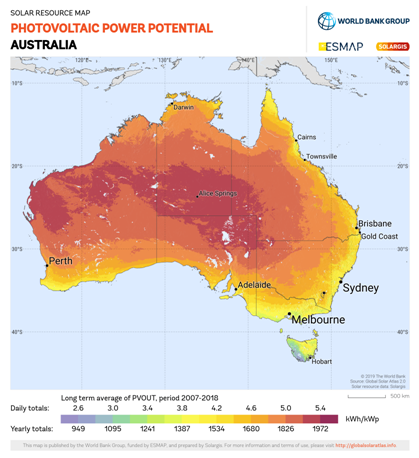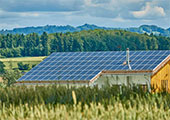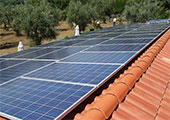What is renewable energy?
Renewable energy is produced using natural resources that are constantly replaced and never run out. Just as there are many natural sources of energy, there are many renewable energy technologies. Solar is one of the most well known, wind power is one of the most widespread, and hydropower is one of the oldest. Other renewable technologies harness geothermal energy, bioenergy or ocean energy to produce heat or electricity. Equally exciting are technologies that enable energy to be produced day and night, therefore strengthening the electricity grid. This includes battery storage, as well as smart technology that can help predict accurately when and where electricity is required.
What is happening in the energy sector?
The energy sector is undergoing a profound and complex transformation as the shift to renewable energy gathers momentum.
Transitioning the electricity system to deal with an increasing share of renewables and different ways of operating is challenging, but it presents many opportunities to help businesses manage their energy costs, as well as capture new sources of growth.
Electricity is only one component of the energy transition. Other sectors such as transport, heavy industry and the built environment are crucial in the pursuit of lower emissions and in ensuring Australia meets its international commitments.
There are many scenarios for the transition to a low emissions economy but technological development and innovation are part of almost every scenario.
How are we making a difference in the renewable energy sector?
Our expertise, deep understanding of the renewable energy sector and willingness to fund innovative and ground-breaking projects mean we provide a pathway to commercialisation for many new technologies and businesses that would otherwise struggle to get off the ground or be potentially lost to overseas markets.
In other words, we help them get on with the business of renewables.
We also actively identify and troubleshoot issues arising from the energy transition – from technological and commercial issues to regulatory and market barriers, and provide funding for projects that help solve these issues.
We undertake research and inform policy decisions, we bring together people from across the energy sector, government, startups and universities to collaborate with one another, and share their knowledge.
Solar power is the conversion of energy from sunlight into electricity, either directly using photovoltaics (PV), indirectly using concentrated solar power, or a combination. Concentrated solar power systems use lenses or mirrors and solar tracking systems to focus a large area of sunlight into a small beam. Photovoltaic cells convert light into an electric current using the photovoltaic effect
Introduction to solar
Though solar power has been around since the 1960s, it was in the early 2000s that the industry kicked off in Australia, thanks to the introduction of the renewable energy target.
Since then, solar has grown across the country, becoming popular with households who are looking to reduce their electricity costs, power their homes with clean, affordable energy and get more energy independence.
Today, over 2 million businesses/homes are powering with solar.

Australia's solar energy resources and production
The Australian continent has the highest solar radiation per square metre of any continent and consequently some of the best solar energy resource in the world. The regions with the highest solar radiation are the desert regions in the northwest and centre of the continent.
Australia's energy resources, including solar energy resources, and the factors impacting on the development and adoption of the various energy resources to 2030 are outlined in the Australian Energy Resource Assessment.
Australia receives an average of 58 million PJ of solar radiation per year, approximately 10 000 times larger than its total energy consumption. However, Australia's current use of solar energy is low with solar energy accounting for only about 0.1 per cent of Australia's total primary energy consumption. The most common use of solar energy is solar thermal water heating. Solar PV systems play an important role in off-grid electricity generation in remote areas.
Electricity generation is increasing in response to government policies, notably the Renewable Energy Target, and as a consequence of the development of photovoltaic and concentrating solar thermal technologies through substantial research and development programs.
Most businesses consume the majority of their energy during the day making them the perfect candidate for solar. Utilising the unused space on your roof will bring the following benefits:
Get Your Solar Project Started Today!
OUR BRANDS



























 WhatsApp us
WhatsApp us